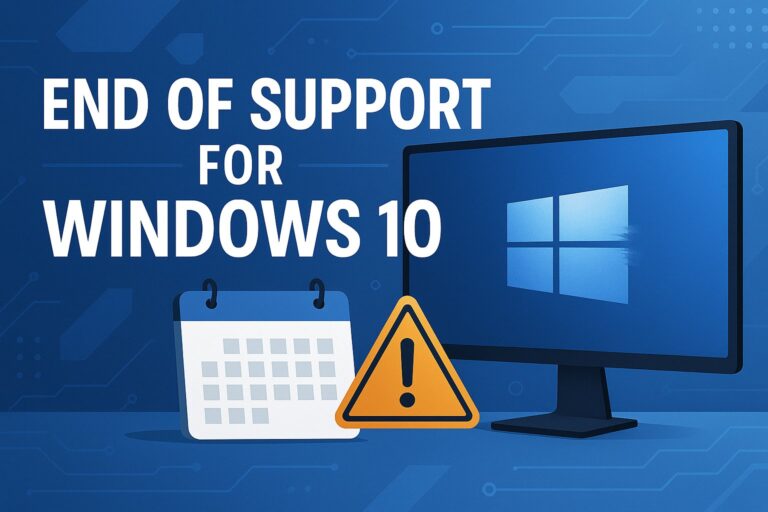How Can You Overcome Them?
Nonprofits in St. Louis, Grand Rapids, and everywhere else in the U.S. face challenges like acquiring donors, retaining and sustaining their funding sources, and deciding how to best allocate resources while sticking to their budgets. They also face technology-related challenges. Some aren’t using up-to-date technology solutions, or they aren’t using them securely.
We list three common technology worries below and how to overcome them.
Worry # 1: Having an Adequate Budget for Technology
Too often, nonprofit executives believe that keeping their technology updated will be too costly. They put this on the back-burner, and, unfortunately, it costs them in the end.
Older servers that shut down can cost several hours of productivity each day. In a year’s time, this can add up to thousands of dollars in lost work time. Plus, using older technology can result in security gaps that hackers look to breach. Data breaches and the resulting bad publicity for your nonprofit can negatively affect your donations and funding.
The Solution: Use Cost-Effective Cloud-Based IT Solutions.
Ask your IT provider about customized, cloud solutions that can help you optimize your resources, and improve operational efficiencies.
Legacy technology systems are often challenging to manage and don’t provide the required return on investment. Cloud-based IT services and solutions are more cost-effective and provide the anywhere/anytime access you need. Plus, you’ll have the technology you need at a fraction of the cost of purchasing it outright.
Instead of expending your capital, you’ll pay an affordable, per-user, monthly subscription. And you’ll no longer need to worry about technology solutions going out of date because they are automatically updated.
With cloud-based Software-as-a-Service (SaaS) solutions, you can scale up or down easily. You’ll have the flexibility to add what you require as your nonprofit grows (or delete if you must scale back). This also makes it easy to predictably budget what you’ll require for the year.
With cloud-based intelligence systems like those in Microsoft Office 365, you can collect donor data from different outreach channels and then analyze this information in a centralized location. This insight allows you to identify trends and patterns that could improve the results of your next fundraising campaign and generate higher revenue.
By exploring these new cloud innovations, it’s possible to leverage technology solutions that you could never afford to purchase outright.
Worry # 2: Data Security
After hearing about all the massive breaches over the past few years, nonprofit association CEOs and managers are now more aware of their risks of being hacked. Security has taken on new meaning as people start putting defensive measures in place.
Even nonprofits for children aren’t safe. The Save the Children Federation was hacked, and the criminals stole more than $1 million. The loss was reported on the organization’s U.S. Federal Form 900 filed with the Internal Revenue Service (IRS) and picked up by news agencies.
Information security should be a priority. You could be doing everything else right, but if you don’t mitigate risk and protect your nonprofit organization’s confidential data, you could face a costly data breach. Just one breach could result in hefty fines, penalties, expensive litigation and a ruined reputation that scares donors away.
The Solution:
An IT system that’s monitored and managed by IT professionals like Alliance Technology Partners promotes the security you need. We can prevent cybersecurity vulnerabilities and keep your technology up and running by:
- Implementing Layers of Security: You shouldn’t rely on just one security mechanism to protect sensitive data. If it fails, you have nothing left to protect you.
- Segmenting Your Networks With Firewalls: Network segmentation categorizes IT assets and data and restricts access to them. It reduces the number of pathways into and within your networks and implements security protocols on these pathways. We do this to keep hackers from gaining access to all areas of your system.
- Using Solutions That Detect Compromises: We use measures like Intrusion Detection Systems (IDSs), Intrusion Prevention Systems (IPSs), and anti-virus software to help you detect IT security events in their early stages. This provides 24/7 detection and response to security threats.
- Securing Remote Access With A VPN: A Virtual Private Network (VPN) encrypts data channels so your users can securely access your IT infrastructure via the Internet. It provides secure remote access for things like files, databases, printers and IT assets that are connected to your network.
- Employing Role-Based Access Controls With Secure Logins: Limiting your employees’ authorization with role-based access controls prevents network intrusions and suspicious activities. It defines user permissions based on the access needed for their particular job. For example, your receptionist might not need access to your financial data.
- Installing All Of Your Security Patches and Updates: Software developers are diligent about releasing patches for new security threats. It’s important to install them as soon as they’re released. If you don’t, your IT system will be vulnerable to cyberattacks. We can set your systems to update automatically.
- Securing and Encrypting Your Wireless Connections: We make sure that your company Wi-Fi is separate from guest Wi-Fi or public networks. Your internal wireless network should be restricted to specific users who are provided with unique credentials for access. These credentials should be preset with expiration dates and new ones provided periodically. Your company’s internal wireless should also be protected with WPA2 encryption.
- Backing Up Your Data: You must have a backup copy of your data if it’s stolen or accidentally deleted. We’ll help you develop a policy that specifies what data is backed up, how often it’s backed up, where it’s stored and who has access to the backups. You need to back up to both an external drive in your office and a remote, secure, online data center, Backups should be set to occur automatically. And we’ll make sure your backup systems are encrypted, and test them regularly for recoverability.
Worry # 3: Mobile Solutions
Nonprofit organizations, just like major corporations, depend on their mobile devices and solutions. Mobile technology lets your staff, board members and volunteers access data and connect to others no matter where they are or what time zone they’re in. However, you must ensure that you use mobility solutions in a secure way.
However, using tablets and smartphones is less secure than using PCs and laptops because they lack pre-installed malware protection. Most computers include data intrusion protection, but smartphone developers still haven’t caught up in this respect.
The Solution:
Mobile Device Management provides a centralized platform to manage all your nonprofit’s smartphones and tablets in the field, in the office and on the road.
But today’s MDM goes farther than this. Some also come with policy- and configuration-management tools to deliver IT support to mobile end users and ensure they maintain security policies.
Mobile Device Management can provide for:
- Hardware & Software Inventory
- OS Configuration Management
- Mobile application deployment, updates and removals
- Mobile Application Configuration & Policy Management
- Remote viewing and troubleshooting
- Mobile Content Management
- Security Solutions such as Remote Wipe
If your devices are lost, stolen or compromised, the team at Alliance Technology Partners can use MDM to wipe your confidential data from them remotely. This keeps bad actors from accessing the data on your mobile devices.
In Conclusion
By assessing technology in relation to your mission and vision, using the right cloud-based solutions, and by following information security protocols, Alliance Technology Partners can help facilitate your nonprofit’s success and overcome these and other common technology challenges.
Did you find this article helpful? If so, check out the others in Our Blog.


